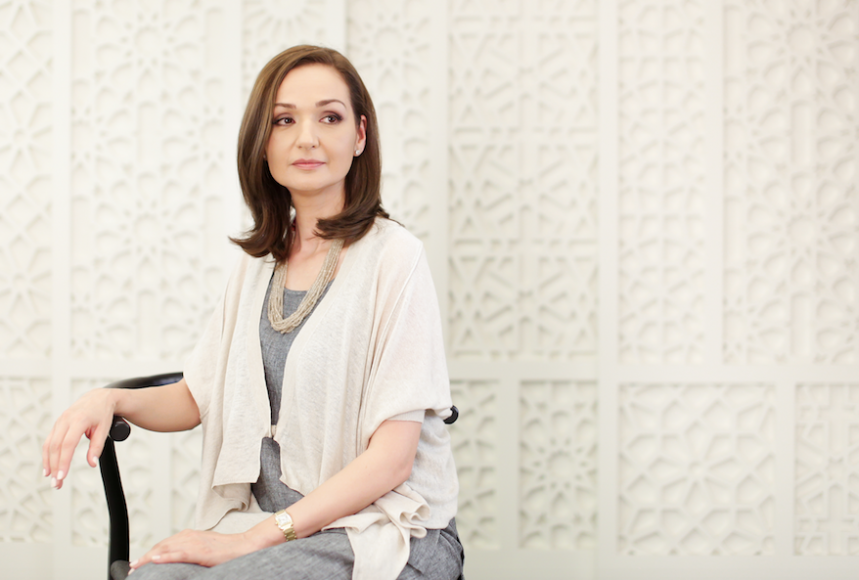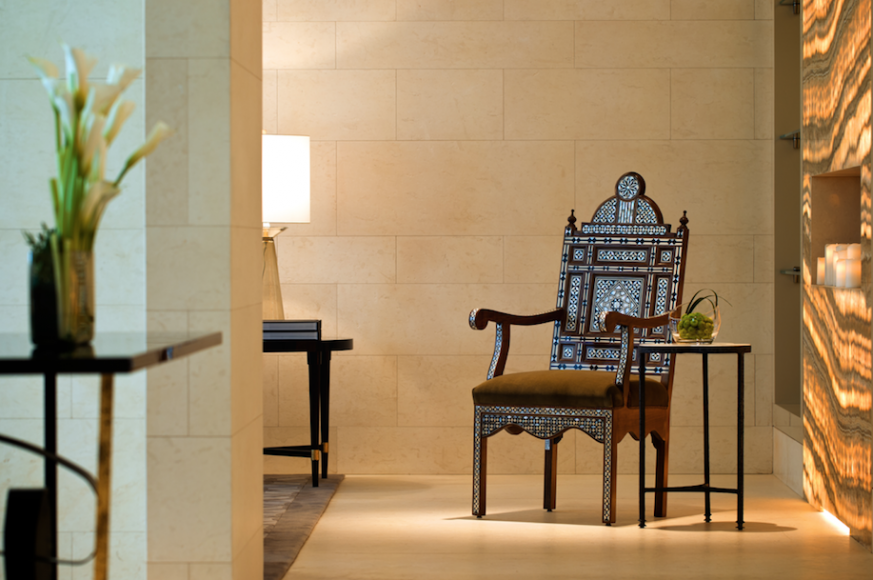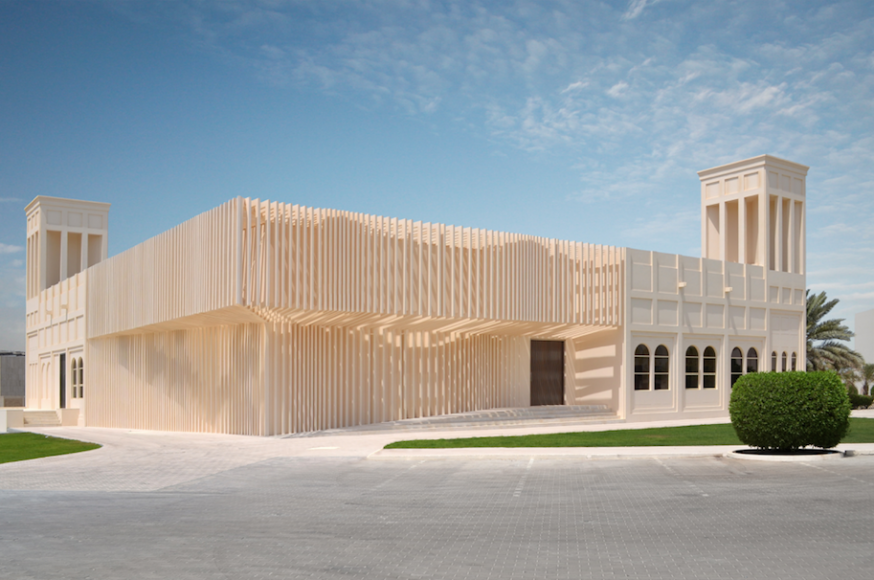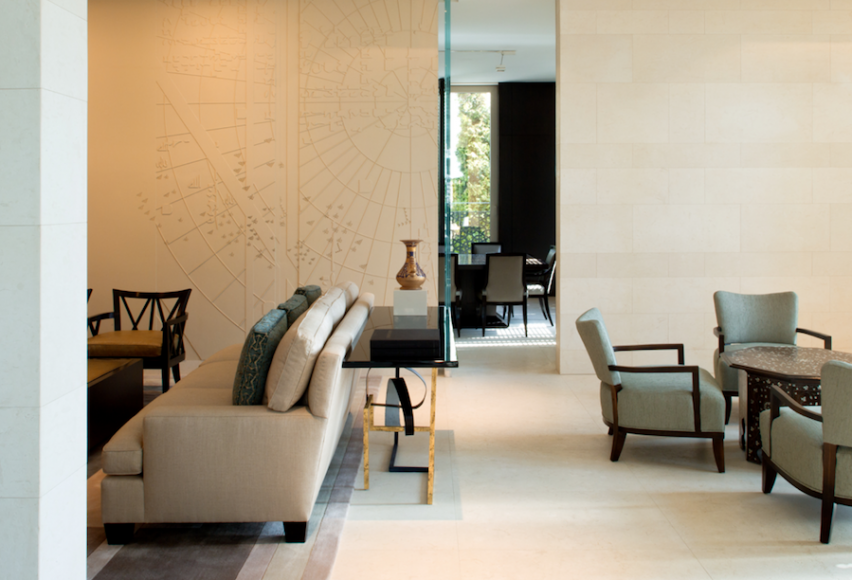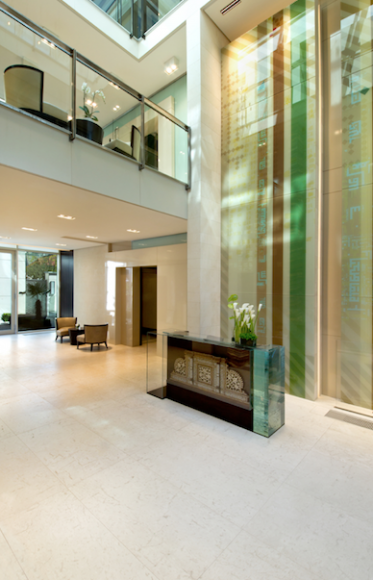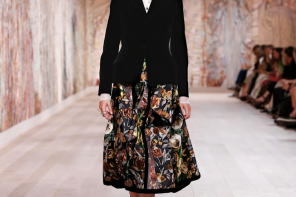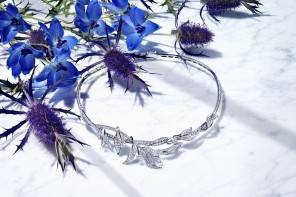Sonia Ashoor is a celebrated designer and a cultural ambassador for Saudi Arabia, having created a series of stunning embassies and royal residences all over the world. Her commissions whether for a UNESCO project, a ministry, or a home, all reveal her innate love of beauty and reflect the radiance of Islamic art and design. Everything she designs reflects a shared purpose and philosophy; this gives her work its signature serenity and timeless harmony.
Ashoor, talks to Al Sharkiah about her expertise and career milestones.
In a few words, please tell us more about your professional route
My early working career commenced by working with a residential design firm in Washington, DC followed by a corporate design position in Rockville Maryland. I then worked in London for a few years renovating historical properties to be put back on the market before moving to Jeddah in 2000. There I cofounded the Interior Design Department for Dar Al Hekma and taught for a year.
In 2001, I established my own design firm SACD in Al Khobar, with a focus on culturally relevant projects. In 2008, we moved the firm to Bahrain for a wider exposure and have been here ever since.
You come from a background that seems like a melting pot of cultures. How do you think this has made you work so different and allowed you to have a unique approach to your work?
My multiple cultural strands are my gift and endless source of inspiration. When you also speak several languages, you live each culture and take on the persona of that culture. This allows for a unique approach to design, in which art, culture and history come together effortlessly in harmony without conflict.
Many international museums have dedicated large sections for Islamic art and architecture, what do you think makes it so captivating?
The allure of Islamic Art is in the unmatched beauty and mystery of its artifacts. What makes these exhibits dreamy is the context; the spaces, displays, lighting and vignettes, are all carefully curated bringing much respect and value to a forgotten era.
Designing embassies and royal residences are amongst your key accomplishments. Can you pick one favorite and tell us more about it from vision to execution?
To date my favorite project remains, the Saudi Embassy and Residence in Warsaw, Poland. It was a project that allowed me to fully express my love for Islamic Art and history in a contemporary context.
Inspired by Warsaw’s vision of rebuilding itself after World War II to the style of its golden age, the 16th century, we took on the 16th century of Islamic Art as our design direction. We were inspired by Ottoman Iznik tiles and dissected colors, patterns and glazes to create artistic art panels throughout. Manuscripts from the Safavid dynasty inspired the space planning, creating a story of meandering spaces and calculated views. The intricate writings in both tiles and manuscripts inspired the calligraphy on our art panels and carvings on limestone walls. Spaces are void of decoration and artistic expressions are limited to the hard interior. Completing a museum feel, carefully selected artifacts are displayed on stands and in glass cases.
Working for UNESCO must have also been a big milestone in your career, please tell us more about that assignment
We had the good fortune to work on several UNESCO projects like Bait Murad in Muharraq Bahrain, The Arab Regional Center for World Heritage (UNESCO), headquarters in Bahrain and more recently Bait Nassief in Jeddah Historic District. Working on these projects came as a natural transition from working on projects for the Saudi Ministry of Foreign affairs. In fact our first restoration project goes back to 2006, with the interior design of the Saudi Embassy in Bern Switzerland, where we worked in close coordination with the Monumental Care to restore and rehabilitate a 16th century manor home.
Our highlight project with UNESCO is The Arab Regional Center for World Heritage. This was a competition project we won and then designed the external façade of a traditional–like building. The facade consists of glass fiber reinforced concrete fins which are spaced according to a pearling song. Through a parametric translation, we transformed the songs audio spectrogram into a physical structure. This has enabled us to translate an intangible art-form (pearling songs) into tangible matter. During the day the facade creates a captivating rhythmic shadow paly and at night an installation of lights (per fin) responds real time to pearling music, creating an interactive light and sound experience.
Being a cultural ambassador for Saudi Arabia, what are your thoughts on what is being done today with regards to design innovation and the path forward across the Kingdom?
I see strong strides towards a more innovative direction in all fields, including the youth as a driving force. I see opportunities for women that were not available to me at that time and hope to see the young women of my country flourish.
As an advocate for Arab cultural identity, what advice would you give young professionals; for them to balance their personal values and preferences while meeting the needs of international clients?
What is important for young professionals is to be more informed of their identity and that only comes with a desperate desire to absorb their own history, stories and secrets as creative mulch.
We have a few renowned interior designers in the Middle East, how challenging was it to prove yourself in a male-dominated milieu?
Proving myself in a male dominated society was not my ambition. Instead, I cared to earn credibility through my work. The challenges included; stringent laws and the lack of opportunities available for female designers at that time. I fought warrior battles to be heard and to earn projects of caliber.
What are you currently work on? And what can we expect very soon?
I seem to reinvent myself almost every ten years, and 2020 marks the second ten year mark. We are currently involved in the rehabilitation and interior curation of Bait Nassief (UNESCO) in JHD, and a few culturally relevant private projects.
By 2021, we are adding a new arm to our services by creating our first two “Cultural Retreats” to Andalusia. This is a women only retreat for one week, to pioneer and experience a week in the life of an Andulsian woman. This idea of traveling into the realm of Islamic Art and culture has been a long time dream of mine and I look forward to sharing the magic this coming year.
We are also expanding our Islamic Art inspired furniture line by collaborating with Islamic Art museums and creating new furniture pieces inspired by their Artifacts. We are currently in discussion with two Museums and look forward to sharing our designs soon.
Text by Victor Gee

